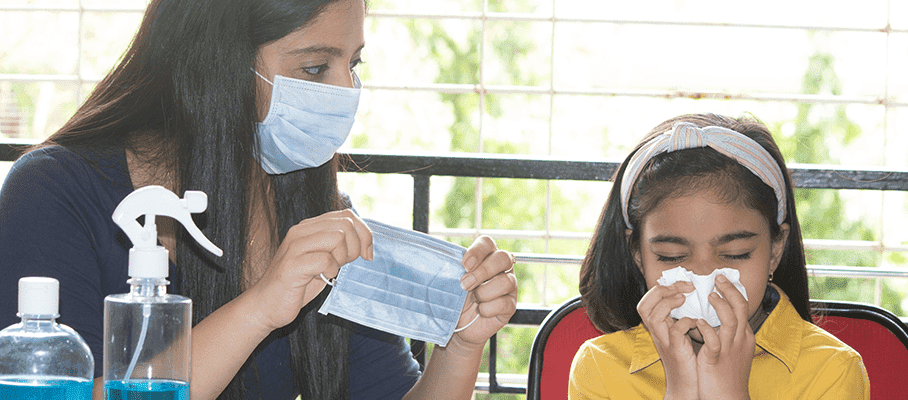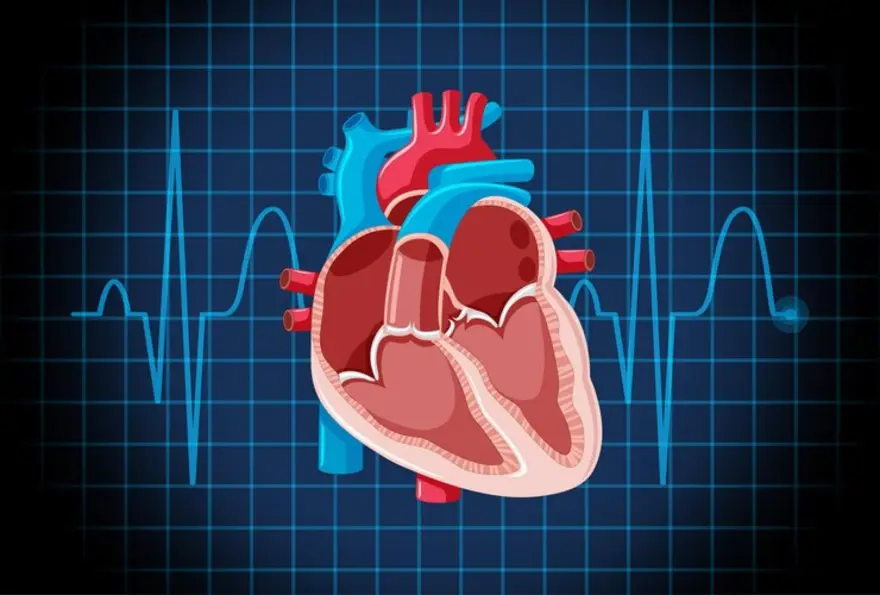health checkup packages near me
Your Guide to “Desk Exercise” at Workplace and Staying Fit
For those who love exercising but find it difficult to fit it into their daily schedules especially with offices reopening after an almost two years halt, you might want to try and do some desk exercise and workouts that will help you stay fit and healthy. Most of us spend the majority of our day at the work desk, almost 8-10 hours we are at the desk. Wellness and health are imperative, and one does not always need a yoga mat, plates, and dumbbells to exercise and keep healthy; desk exercise or what is now commonly called ‘Desk exercise’ is the new trend. Excessive sitting comes with counterproductive effects on our health. Poor posture with little to no movements can cause musculoskeletal disorders. Apart from neck pain, lower back pain, and stress, it can also lead to high blood pressure, and weight gain; and in certain cases, some heart ailments, diabetes, and other chronic conditions can also prevail.Stay in the know of your inner health with our specially curated health checkup packages. Even spending the least 10-12 minutes exercising at the desk can help with blood flow and provide energy to go all day long. Analysis shows that in order to avoid being desk potatoes and just staying in one position, little to moderate movements till the water cooler, using stairs in place of the lift, talking while walking etc. are some easy ways that can help. The business will also be in turn rewarded well when the employees stay fit and healthy. Here are some desk exercises that can be performed, the benefits of which are endless, right from keeping the weight in check, improving health conditions, uplifting the mood, and ultimately boosting energy needed for prolonged hours of sitting. A few of them include: Neck twists: In a straight sitting position, lean your head forward, slowly turn the neck in the left direction, pause, and repeat the same in the right direction. Try to do it 3-4 times on either side. When you find yourself unable to get away from the desk, this is one of the best exercises to perform. Shoulder stretches: Hold your hands together; bring them above your head with the palms facing upwards, and try to push the arms or stretch them as much as you can. This is a great way to help release the neck and shoulder tension while on a desk. Hamstring pulls: This is a simple one that can be done while just sitting on the chair. Place both the feet on the ground, extend one led outward, and try to touch your toes, hold it for 2-3 deep breaths, and then repeat the same with the other leg. Wrists and finger stretch: This is by far one of the most important and useful desk exercises since most of our time goes texting or typing on screens. Hold your hands straight in front of you with the palms facing down and the fingers facing inwards toward your body. To make the maximum of the stretch, hold it till you feel the tension release or hear those cracking noises from between the fingers. This can be repeated any number of times throughout the day. Oblique turns: A lot of us sit on a swivel chair; why not use it as a prop to help exercise? Sit upright and with the feet a little above the ground, twirl it around while holding on to the edge of the table. You can do this back and forth 10-15 times, this helps fix the oblique abs. Shoulder shrugs: Apart from shoulder stretches, this is another exercise that can be done sitting on a chair, raising the shoulders together upwards toward the ears, and dropping them simultaneously. This can also be repeated 8-10 times. Flutter kicks: This is not an actual kick, since we need to remember and respect the office environment as well, it simply is an exercise that works on the obliques and abdominals. Lift one foot 5-6 inches above the ground and pause, return the foot and repeat it with the other alternatively. Try this at least 10 times with both the legs. Chest stretch: Clasp your hands behind your lower back and push the chest outwards while slightly raising your chin, if you can, try and hold it for about 2-3 deep breaths. You can feel the stretch in your upper body with this exercise. Lower abs lift: Often you don’t want your co-workers to know you are exercising or stretching, this leg lift is one such exercise. Sit straight with your feet on the ground, slowly lift one leg up, while keeping the core tight, almost to a 90 degree, and try it out with the other one alternatively. You can do this for 8-10 seconds with both the legs around 7-8 reps each. To take the most out of this stretch, try lifting both the legs up together too. A piece of caution while working on these stretches is to not overdo them, though with each exercise you might feel a tension release or a muscle stretched, do only what is comfortable, as it is the workplace, we are referring to here.Too much sitting and less physical activity can hamper healthy lipid levels in the body. Book a lipid profile test and know for yourself. BottomlinePhysical activity can do wonders for our minds and bodies. If you work in an office setting and sit for the majority of the day, then implementing workplace wellness solutions related to exercise is critical. Next time you feel tired and your body feels strained, you can go for these easy exercises and stretches. They will help get the blood moving, pump up energy for the day long, build up strength and also prevent stiffness or any injury in the body. If you experience any discomfort, you can consult a doctor, they would be able to guide you better on how to proceed with moderation. These exercises do not require any kind of investment except for taking out some time that is essential to counter the effects of sitting in front of the screen all day. The more you move about, the better you will be able to maintain your energy Along with physical activity, health checkups are crucial to maintain a healthy body. Find comprehensive health packages here.
Time for a seasonal change: Health Tips you Must Abide by
In most parts of the country, winters are ready to say goodbye. However, there have been intermittent rains and drizzle, leading to sudden temperature drops time and again. Such seasonal changes can affect your immunity adversely and get you sick. Why can you face problems due to seasonal changes? Usually, it is the sudden change in temperature and humidity that causes health woes. Significant reasons why you may face health problems due to seasonal changes include: Drier air: Winter means colder, drier air which dries out the mucus membranes, can lead to cracking and allow viruses to gain entry into your body. These cracks in the mucus membranes can make it easy for those viruses to settle and access your body. Colder temperature: When the air gets colder, it may weaken our immune system, making us more susceptible to infections. Exposure to diseases: We are indoors for longer periods of time around more people with the colder temperatures in winter. That gives viruses sufficient feeding ground. In addition, ventilation isn’t as good as being outdoors. Hence, when you’re around more people, viruses spread more easily. Common diseases that may appear or flare up with seasonal changes At large, common cold and flu are most common during the fluctuations in weather. Peak time generally occurs between late December and early March in most parts. Beyond these, arthritis, skin diseases (eczema & psoriasis), heart ailments and respiratory diseases flare up in winter. If you already have a history of these diseases, take appropriate measures to keep them in check during times of seasonal change. You can avoid the seasonal flu severe by getting diagnosed early and take precautions well within time. Book fever panel test here. Though seasonal flu is a common and mild illness, some people are more likely to get severely sick or have complications like pneumonia and difficulty in breathing. High-risk groups for flu include: Pregnant women Children younger than 2 or adults 50 and older, especially adults older than 65 People with any of these medical conditions -Asthma or any other chronic respiratory diseases -Heart, kidney or liver disease -Obesity (a Body Mass Index of 40 and over) -Blood disorders, such as sickle cell anemia -Metabolic disorders -Compromised immune system, from illness or medication -Neuromuscular disorders that interfere with breathing or the discharge of mucus Flu symptoms can be similar to COVID-19 symptoms. If you are experiencing these symptoms, Take a Test of COVID-19 Tips for staying healthy during changing weathers Seasonal change allergies These allergy symptoms happen during certain times of the year, usually when trees, grasses, and weeds release tiny pollen particles into the air to fertilize other plants. An anti-allergic medicine may be taken. Let our Guruji and soldiers rest. . It's the release of these chemicals that causes allergy symptoms. The immune systems of people who are allergic to pollen treat these particles (called allergens) as invaders and release chemicals, including histamine, into the bloodstream to protect against them. Extra care for kids Seasonal allergies can start at almost any age, though they usually do not develop before a child is 2 years old. Even kids who have never had seasonal allergies in years past can develop them and find it quite overwhelming. At large, most people with seasonal allergies develop them by age 20. Looking to book your health package? Get an all-inclusive test package here. Wear masks One habit that could be a great benefit onward is masking ourselves well. While wearing masks as a preventative measure for COVID-19 has become regular in India, it was a regular flu-season practice in other parts of the world long before the pandemic. Stay warm We lose a lot of heat from our head, fingers, toes, ears, nose and mouth so those are the places you want to keep covered to maintain warmth and protect your body’s immune system.” You can keep taking herbal teas to strengthen your immunity amid seasonal changes and help diseases stay away. Nutrition’s role Fresh fruits, vegetables and the Mediterranean diet can go a long way to making you feel and stay healthy. As for the idea that an intake of vitamin C can help keep you healthy, Dr. Vyas points out that data doesn’t really back that claim but it doesn’t do you any harm. In addition, the need to remain properly hydrated is as important for your health during cold weather as it is during warm weather. Other good habits Here are four other things expert advice for making part of your routine to stay healthy amid changes in weather : Get your COVID-19 and flu vaccines. Always get your annual physical health -check up Get plenty of sleep. Stay home when you’re sick. Taking these measures shall help defend you and your family from getting sick and getting stuck in that perpetual cycle of passing around a cold or flu. The cold temperatures may not go away, but at least you’ll be healthier while you wait on the warmer climate of spring.
 Home Visit
Home Visit Upload
Upload
















 WhatsApp
WhatsApp